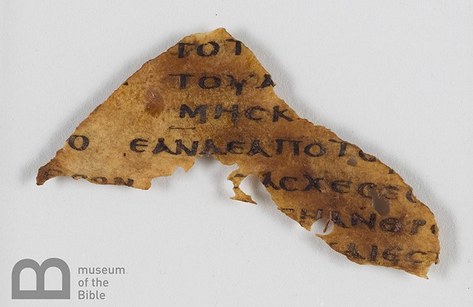 Source: www.facebook.com/museumofthebible
Source: www.facebook.com/museumofthebible Fortunately, not only were all these papyri already published in the P.Oxy. volumes, but they had recently been included in the American Theological Library Association "Cooperative Digital Resources Initiative" and thus can be viewed publicly on the internet -- http://www.atla.com/digitalresources/ (Search the DataBase, Limit by Collection, check off Oxyrhynchus Papyri and "Submit," keyword "Oxy," click on descriptions and images). The images and descriptions can even be offloaded ("Save As").
The situation was discussed at some length on the PAPY scholarly electronic list, and some late attempts to stop or delay the sale were addressed both to the sellers (the Trustees at Colgate Rochester Divinity School -- the Library that housed the fragments apparently was not complicit in the sale) and the legal department of the agent (Sotheby's in New York City). Egyptian Exploration Society officers issued a statement that emphasized the intent of EES that the materials were for public use, through museums and libraries. I'm not aware that the Egyptian authorities were apprized of the situation or issued any statement, although it could be argued that ultimately, this is Egyptian property. Some have questioned the right of a not-for-profit institution (CRDS) to sell to the highest bidder materials obtained by "donation" from a not-for-profit organization (EEF). It clearly seems to be a "moral" issue, even if its "legal" status remains murky; and a very questionable precedent!"
